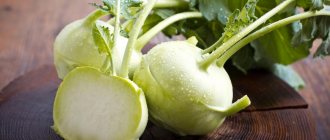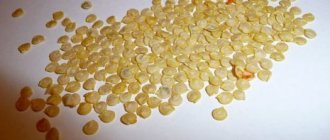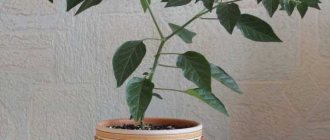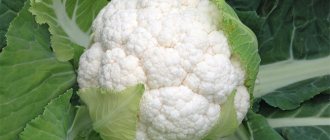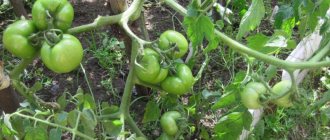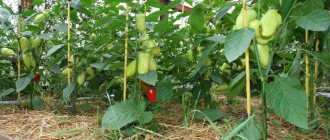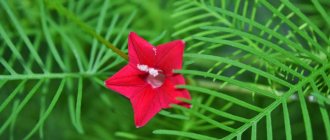The best varieties of hot peppers
In Russia, hot peppers are grown everywhere. To date, quite a few varieties have been bred that are suitable for growing in any conditions - in open ground, in greenhouses and even on a windowsill at home. For each cultivation method there are the most suitable varieties. All of those included in the State Register can be grown both in open ground and indoors. Some of them are successfully grown at home. Let's list the most popular:
- For open and closed ground: Astrakhan 147;
- Mother-in-law's tongue;
- Eagle Claw;
- Miracle of the Moscow Region;
- Ram's horn;
- Red Fat Man;
- Indian Spear;
- Spagnola F1;
- Ukrainian;
- Barmaley;
- Flame, etc.
- Bride;
Photo gallery: some popular varieties of hot peppers
The seeds of the popular Ram's Horn pepper are produced by many class=”aligncenter” width=”406″ height=”695″[/img] Astrakhan 147 - an old and proven variety of hot pepper
Eagle's Claw hot pepper has a hot taste
Hot pepper Indian Spear is gaining popularity in Russia
Red fat pepper has fairly thick walls.
Spagnola F1 - hot pepper with Spanish roots
Ukrainian hot pepper ripens in the mid-early period
Hot pepper Miracle of Moscow region is popular in the middle zone
Varieties
There are many types and varieties of hot peppers that can be planted on the windowsill. Take a look at the range of seeds that are most often grown at home:
- Jalapeño - grows quickly, forms compact bushes 50-100 cm high. Up to 40 fruits 5-8 cm long, 2-3 cm in diameter, weighing up to 50 g ripen on the bush at the same time. The color is dark red, but green, unripe fruits are also used . The taste is fruity-burning, moderately spicy.
- Hot cherry – from sowing to the first harvest 85-90 days. The plant is small, compact, all dotted with small round red fruits 2.5-3.5 cm in diameter.
- Habanero is one of the hottest peppers. The plant is branched, the fruits are 3-4 cm long, up to 2 cm wide, uneven, cone-shaped, red or orange when ripe.
- The fiery bouquet is a productive, tasty chili, great for cooking. The fruits are cone-shaped, curved, red.
- Spice Boys are small plants, ideal for a 1-liter pot on the windowsill. White, green, and purple pods become orange, red, and yellow as they ripen.
Growing hot pepper seedlings
As a rule, hot peppers are grown through seedlings.
Sowing time for seedlings
They directly depend on the timing of transplanting seedlings into the ground (more on them below). It should be taken into account that its age should be approximately 50-75 days from the moment of the appearance of full shoots (it depends on the ripening period of a particular variety). And also 10-15 days are added to this period when calculating, which usually pass from sowing to germination. The method for calculating the timing of sowing hot pepper seeds for seedlings can be found here. Additionally, you can adjust the estimated dates with the recommendations of astrologers. In 2021, favorable days will be the following:
- January - 17-19;
- February - 1-3, 6-7, 24-29;
- March - 1, 4-6, 25-28, 31;
- April - 1, 2, 7, 24, 25, 28, 29.
Preparing seeds for planting
Some manufacturers offer for sale seeds that have undergone pre-sowing preparation under production conditions. Most often they are inlaid, that is, covered with a special brightly colored coating . In any case, information about such preparation will be indicated on the bag. Such seeds can be immediately sown in the ground, but all others, including those collected independently, should preferably be prepared for planting. For this:
- The fullest and heaviest seeds should be selected. The easiest way to do this is by immersing them in lightly salted water for 20-30 minutes. Full-fledged and heavy seeds will sink to the bottom - they are used for sowing.
- At the second stage (some combine it with the first), disinfection is carried out by treatment in a pink solution of potassium permanganate for 10-15 minutes. This allows you to get rid of pathogens located on the surface of the seeds.
Treatment in a pink solution of potassium permanganate allows you to get rid of pathogens located on the surface of the seeds
- If there is a suspicion that the infection is inside, then it is worth carrying out heat treatment. To do this, place the seeds for 10-15 minutes in hot water at a temperature of +45-50 °C. It is important to know that a lower temperature will not have an effect, and a higher temperature will lead to the death of the seeds.
- After this, the seeds can (but not necessarily) be germinated. To do this: They are laid out on damp gauze or cotton wool, placed on a saucer or in a container.
- They create a greenhouse effect by placing a saucer with seeds in a bag.
- Place for germination in a dark and warm place.
After pipping, the seeds are sown in prepared containers with nutritious soil.
Sowing hot peppers
More often, hot peppers are sown immediately in individual containers (peat or plastic glasses with a volume of 0.3-0.5 liters, pots, peat tablets) without subsequent picking (transplanting into a separate container), or into common containers. To fill them you will need nutritious soil.
Suitable soil mixture
More often, ready-made soil from the store is used for sowing seeds.
More often, ready-made soil from the store is used for sowing seeds.
If desired, you can prepare it yourself by mixing suitable components available to the gardener. For example, we can recommend the following composition:
- turf soil - 2 parts;
- humus - 1 part;
- peat - 1 part;
- sand - 1 part.
Sowing seeds and conditions for their germination
Containers filled with soil are placed in seedling boxes 10–20 cm high, spilled with warm water and several prepared seeds are sown in each of them (after germination, the best ones are selected and left) to a depth of 1–1.5 cm. When sowing in common containers the interval between seeds is maintained within 1-3 cm. Then you need to create suitable conditions for seed germination:
- High humidity - creates a greenhouse effect by covering the seedling box with film.
- Warmth - seedlings will appear most quickly at a temperature of +25-28 °C.
- Lack of light - before the emergence of shoots, the box is covered with thick cloth or black film.
- After germination, the temperature is reduced to +18-22 °C and the seedlings are placed in a well-lit place. From now on, she will need to be provided with 12-14 hours of daylight. If necessary, you need to organize additional lighting using phytolamps or ordinary fluorescent lamps.
Sowing hot peppers in sawdust
Alternatively, you can sow the seeds in hot sawdust. Suitable for this purpose are those that have been stored for at least 6-12 months. The procedure is simple:
- Sawdust is poured into a pan, poured with boiling water, covered with a lid and steamed until it swells.
- Then, while still hot, they are poured into a container in a layer of 5-10 cm.
Hot and wet sawdust is poured into the container in a layer of 5-10 cm
- The sowing procedure is similar to sowing in containers with soil, and the germination conditions are also similar.
- After the cotyledon leaves appear, the seedlings are planted in separate containers.
Seedling care
After sowing, seedling care must be constant.
Watering
During the growing period of seedlings, they need to be watered regularly. The frequency and abundance of watering depend on the conditions of detention; the need for it is determined by monitoring soil moisture. It should not dry out deeper than 0.5-1.0 cm, and at the same time not be waterlogged and sour. You also need to regularly loosen the soil carefully so that a crust does not form on it. For irrigation, you should use rain or melt water at room temperature, and bottled or simply standing (for 1-2 days) tap water is also suitable.
For irrigation, you should use rain or melt water at room temperature, and bottled or simply standing (for 1-2 days) tap water is also suitable.
Top dressing
Before planting in the ground, seedlings need to be fed three times:
- 15 days after the emergence of full shoots and the formation of two true leaves.
- After picking seedlings or after the formation of four true leaves.
- 4-6 days before disembarkation.
For fertilizing you will need fertilizers containing nitrogen, phosphorus and potassium. All these elements are contained in balanced amounts in a fertilizer called nitrophoska. It is used for watering, dissolving in a concentration of 1 tsp. for 1 liter of water.
Nitrophoska contains nitrogen, phosphorus and potassium in equal proportions
Picking
Hot peppers react poorly to picking, especially if the roots are injured. If, however, a method using picking is chosen, then it must be carried out by transshipment with a lump of earth, without allowing the plant to go deep. Seedlings grown in peat tablets are planted together with them in large containers, and it is better to remove the nets on the tablets.
Peppers are picked using the method of transferring them with a clod of earth.
Video: forming pepper seedlings
Hot pepper: description
The ancestors of modern Mexicans, the Aztecs, called this plant “chilli” (chili - red), they ate the fruits raw or dried over a fire.
Tropical shrub up to 60 cm tall - a spice that has a burning taste:
- leaves - in the shape of an ellipse;
- flowers - covered with white, grayish or purple spots;
- fruits - berries in the form of a ball or trunk, colored red, yellow or dark olive.
The phenolic compound capsaicin, which is found in the seeds and skin of the fruit, makes the taste of pepper spicy and hot; the degree of pungency depends on its amount.
Useful properties of hot pepper
For medicinal purposes, only the fruits of red pepper (chili) are used; tinctures, decoctions, and ointments are prepared. They contain vitamins A, C and B, potassium, magnesium, iron, essential oils and fatty acids. They are used in the following cases:
- to increase appetite and improve the functioning of the digestive system (there are exceptions for patients with gastritis and high acidity of the gastrointestinal tract);
- to improve the condition of sore joints and muscles, pepper plasters are applied to the sore spot;
- to relieve shock, heart attacks, fainting;
- infusions and solutions with pepper are used in the preparation of foot baths with reduced blood circulation;
- to fight cancer cells.
Harm of hot pepper and contraindications
People with gastrointestinal diseases should use this product in moderation or completely abandon it, so as not to complicate the situation and not cause additional harm to health. Other organs that are at risk from excessive consumption of hot peppers:
- pancreas;
- allergy to the product;
- the cardiovascular system;
- organs of the gastrointestinal tract (GIT).
Attention! You need to be careful when eating hot peppers. If you feel unwell after eating just a little of it, consult a doctor immediately. However, you should not aggravate the situation, and do this without waiting for attacks.
Planting hot peppers in open ground and caring for them
Transplantation of seedlings is carried out on previously prepared beds, into the soil of which the following must be added for digging:
- 5-10 kg/m2 of humus or compost;
- 30-40 g/m2 superphosphate;
- 3-5 l/m2 of sifted wood ash.
It is convenient to form a bed 1-1.2 m wide, on which to place 2-3 rows of plants at intervals depending on the tallness of the planted variety. Often information about planting density is indicated on the seed bag. When choosing a place for a garden bed, you need to place it as far as possible from the place where sweet peppers are grown, otherwise they may acquire bitterness as a result of cross-pollination, and bitter ones, on the contrary, may lose it.
It is convenient to grow hot peppers on strip beds
Landing dates
Hot pepper is a heat-loving plant. Its seedlings are planted in the ground at a steady air temperature of at least +15 °C, which occurs within a time frame depending on the climatic characteristics of the region and growing conditions.
Table: approximate timing of planting hot pepper seedlings in the regions
| Region | Time for planting in the ground | |
| closed | open | |
| Siberia and the Urals | May 5—10 | June 10—20 |
| Northern part of the middle zone, including the Moscow region | May 1—5 | June 10—15 |
| Southern part of the middle zone | April 10—20 | May 5—15 |
| Southern regions | March 1—5 | |
Watering and fertilizing
Hot pepper varieties are quite moisture-loving and require regular watering. As a rule, they are carried out at intervals of 2-3 days, but you need to focus on the condition of the soil. If the crust on the surface begins to dry out and its thickness exceeds 2-4 cm, then the pepper needs to be loosened and watered. At the same time, you should not flood the beds too much or too often, as this leads to stagnation of moisture, acidification of the soil and, as a result, the occurrence of fungal diseases. For watering it is convenient to use drip irrigation systems.
It is convenient to use drip irrigation systems for watering hot peppers.
It is important to provide peppers with nutrients during the growing season. The first fertilizing is done 2 weeks after planting the seedlings in the garden bed - at this time nitrogen fertilizers are needed to accelerate the growth of bushes and increase green mass. Then you will need potassium-phosphorus fertilizers, which are applied 15-20 days after the first feeding. In the future, fertilizing is repeated at the same interval, alternating nitrogen with phosphorus-potassium. In addition to them, it is good to carry out foliar feeding with complex fertilizers containing all the necessary microelements in balanced quantities.
Bush formation
Hot peppers, as a rule, are formed into 2–3 stems, and sometimes this operation begins at the seedling stage. The signal for the beginning of formation is the formation of a fork on the stem and the formation of a so-called crown bud in it. It must be removed, and if such buds appear in other forks, then do the same with them. After the formation of the stems, you should regularly cut out the emerging stepsons, and also remove all the leaves and flowers located below the fork. Depending on the variety, up to 25-30 fruits are left on each bush, after which the tops and excess ovaries are pinched off. After this, the plant will direct all its forces and nourishing juices to the growth and ripening of the remaining fruits.
The formation of hot peppers begins with the removal of the crown bud.
Seedling care
After germination, bad shoots are removed, because they do not allow the others, the stronger ones, to develop. When the seedling has grown to approximately 20 cm, the top is pinched off to stimulate root development.
For the friendly germination of seedlings at home, their strength and health, it is recommended to control the air temperature (+20-+23 ° C during the day and +16 ° C at night) and properly irrigate, illuminate and fertilize the sprouts
Watering
With the first shoots, watering is stopped for 3 days, leaving only spraying. After the opening of the first cotyledon leaves, it is resumed. Water temperature for irrigation +21-+26 °C. There should be no stagnation.
Additional lighting
Hot pepper seedlings do not require lighting, because... it only receives natural daylight from the sun. But with a short daylight hours, the plant should still be given additional light.
For sprouts, you need to choose in advance a window sill that receives the most sunlight. It is best to do this on the south side.
Top dressing
It is most useful to fertilize during active vegetative growth, using mineral and organic compounds. The following composition works very well: add 40 g of superphosphate, 15 g of potassium salt, 10 g of urea to 10 liters of water. This amount should be enough for about 10 sprouts.
Features of agricultural technology of hot peppers in a greenhouse
In comparison with open-ground agricultural technology, growing hot peppers in a greenhouse has some features:
- In the greenhouse, it is important to maintain an optimal level of air humidity at 70-80% (measured using a hygrometer). If there is excess humidity, it is regulated by ventilation; if the air is too dry, containers with water are placed in the room.
- Recommended temperature range is 23-28 °C. At a higher temperature, the greenhouse is ventilated, and when it decreases below +12-15 °C, additional heating may be necessary.
- For the formation of ovaries, artificial pollination will be required, which can be done manually (simply shaking the bushes) or using a fan to create an air flow.
- When planting, a slightly denser placement pattern is chosen, which may result in a reduction in the number of stems during formation.
- Fertilizing is carried out according to the standards for open ground, but the amount of nitrogen is halved.
Seedlings for greenhouses
When planning to grow peppers in a greenhouse, you need to prepare fertile soil in advance by spreading it over ridges. For greenhouses, hot pepper seedlings in peat pots are more convenient ; they take root better and practically do not get sick.
Replanting is carried out when the soil warms up sufficiently, usually in late spring. In a continuous cycle greenhouse, heated all year round, plants can be planted at any convenient time.
How to distinguish seedlings of hot pepper from sweet pepper? Some gardeners prefer not to grow seedlings themselves, but to buy them at the market or in nurseries. In order not to confuse hot pepper seedlings with sweet pepper seedlings, you need to carefully examine the plants. Bitters have noticeably thinner stems and narrower leaves.
The older the seedlings, the more noticeable the difference becomes. You can lightly bite a leaf of the plant. Green hot peppers have a brighter, slightly hot taste.
Experienced breeders do not recommend placing hot and sweet peppers next to each other . Cross-pollination is possible and both species will lose their taste. When planting plants in a greenhouse, place them as far as possible from each other, or better yet, separate them with partitions.
Features of growing hot peppers on the windowsill
At home, hot peppers can be grown as a perennial crop, but some important nuances should be taken into account:
- Plants need a lot of light, but without direct sunlight.
- In winter (December - February), peppers are put into a dormant state. To do this you need to: stop applying fertilizers;
- remove flowers and ovaries;
- reduce water consumption during irrigation;
- reduce the temperature to +15-18 °C;
- reduce the light level.
Hot peppers at home look very decorative
Formation of hot pepper pods
Try to keep plants below 36°C, be careful not to feed them too much nitrogen (they will grow large, but may forget to pod) and don't let them dry out; this should help prevent the flowers from falling off. Larger varieties may need support with a stick or rope.
Ornamental varieties can be moved to a bright spot in the house or patio once they are well established.
If your flowers are falling off, this could be due to a number of reasons:
- If they're outside, it's probably cold, windy weather.
- If they are indoors, it may be a lack of humidity, in which case it is necessary to spray with water.
- Lack of nutrition can also reduce flower production.
What diseases and pests can threaten hot peppers?
Hot peppers are more resistant to diseases, but pests that want to feast on hot fruits are generally difficult to find. Below we list the most likely representatives of the diseases:
- black leg (usually at the seedling stage and in the greenhouse);
- powdery mildew;
- late blight;
- tobacco mosaic virus (TMV);
- Fusarium
Possible pests that sometimes settle on pepper leaves include:
- aphid;
- spider mite;
- whitefly
Without going into details, we note that fungal diseases are combated by treating with fungicides (antifungal drugs), and insecticides (insect killers) are used against pests.
Photo gallery: signs of main diseases and pests of hot pepper
Blackleg often affects seedlings
Late blight sometimes affects hot peppers
Powdery mildew on the leaves looks like a white coating
Tobacco mosaic virus can massively infect pepper plantings
Fusarium wilt of pepper is a fungal disease
Aphids can settle on the underside of leaves and feed on their sap
Spider mites can be detected by small bumps on the leaves
Whiteflies lay eggs on the undersides of leaves
How to grow hot peppers from seeds on a windowsill
In an apartment, you can start sowing as early as January, since the hottest varieties usually have a long growing season.
Pre-soak the seeds overnight in warm water or epin solution.
Fill small low containers with prepared soil for seedlings, sow the seeds (not too thickly) and sprinkle with a thin layer of soil.
Peppers need a lot of heat to germinate, so first place the container with the seeds in a warm, dark place and cover with a plastic bag. They germinate at a temperature of 21-28 C.
Shoots will appear approximately a week after planting. But don’t worry if they are in no hurry - the pepper germinates well if the seeds are fresh.
Once germinated, move the hot peppers to a warm, sunny windowsill.
After the seedlings have their first true leaf, they are transplanted one plant at a time (picked) into pots with a diameter of 10-15 cm.
Propagation of hot peppers by cuttings
Hot peppers propagate well from cuttings - this is especially true when growing hybrid varieties at home, which retain their varietal characteristics using this method. The process is simple:
- From young shoots, cuttings 8-10 cm long with one or two leaves are cut.
From young shoots, cuttings 8-10 cm long with one or two leaves are cut
- Several longitudinal scratches are applied at the bottom of the cuttings at a distance of 4–5 cm.
- Soak the lower ends in Zircon solution (3 drops per 100 ml of water) for 12-24 hours.
- Prepare glasses with a capacity of 0.2-0.3 liters, filling them with the nutrient mixture.
- One cutting is planted in each glass and moistened well.
One cutting is planted in each glass and moistened well.
- Glasses with cuttings are placed in a seedling box and covered with film to create a greenhouse effect.
- Rooting usually lasts 2–3 weeks, during which time you need to maintain a temperature of +23–25 °C.
- Periodically (every 1-2 days) the film is removed for ventilation and the soil is moistened if necessary (it should not dry out).
- Further care is the same as for ordinary seedlings.
Video: propagation of hot peppers by cuttings
Home care
Growing a crop in a pot is not a difficult task for experienced vegetable growers, but beginners should familiarize themselves in detail with the rules and care features.
Temperature and lighting for hot peppers
Like their garden relatives, indoor varieties prefer a warm microclimate, so during the growing season they need to be provided with a temperature within 25˚C. In winter, this figure should be slightly reduced to 15-18˚С. The change in night and day temperatures has a beneficial effect on the plant. With the onset of warmth, it is advised to move the pot to the balcony or loggia.
For full development and high yield, it is recommended to place the flowerpot on a western, southwestern or southern windowsill. A light-loving plant in spring and autumn needs good sunlight up to 4 hours a day. On hot days, when the sun is especially active, it is better to shade the above-ground part. If there is too little light, use artificial lighting with phytolamps.
Watering and humidity
Pepper is a moisture-loving crop, so it is important to regularly monitor the condition of the soil and spray to create the required level of moisture. For procedures, you should take water at room temperature. In spring and summer, watering is carried out as the substrate dries, and spraying is carried out at least twice a week.
Advice!
If the flowerpot is located next to heating devices (or on hot days), then it is better to use a spray bottle once every two days.
With the onset of autumn, the frequency of watering is reduced, and in winter it is reduced to a minimum. Pepper does not respond well to drought. Its leaves and fruits can not only wither, but also fall off. A prolonged lack of water can lead to death.
Pot and substrate
The flowerpot for peppers should be small. If a plant is picked from a common box, then the container should have a volume of no more than 100 ml. The pot must have drainage holes so that excess liquid can drain into the pan.
You can purchase ready-made soil mixture in the store, or you can make your own nutrient substrate:
- leaf humus - 2 parts;
- turf soil – 2 parts;
- sand - 1 part.
You can prepare the soil from components that can be found on any farm: crushed stone, sand, fertile black soil and universal fertilizer. All components are poured in layers. The first layer is crushed stone (drainage material), sand and black soil. Fertilizer can be mixed with soil or sprinkled between a layer of sand and soil.
Preparing seeds for sowing
A 3% saline solution in which they are dipped will help determine the quality of the seeds. To prepare the solution, take 40 g of salt per liter of water. Empty seeds float, those suitable for sowing sink to the bottom. The selected planting material is laid out on paper and dried.
The next step is seed disinfection. Potassium permanganate is dissolved in a container, into which the seeds are dipped.
Related article:
Folk remedies for feeding pepper seedlings
In order for the seedlings to grow strong and withstand temperature changes, the seeds are hardened. Disinfected seeds are placed on a plate, covered with a damp cloth and kept in a cool room during the day, and in the refrigerator at night for several days.
How and when to harvest peppers
To grow large fruits of hot pepper, a gardener will need knowledge of agricultural technology, but he also needs to be able to preserve the pods. Harvesting begins in early July and ends in October. They reach their consumer maturity after acquiring a pronounced red color.
Store pepper at a temperature of 18-20 degrees. If there is a need to preserve the crop for a long time, drying should be done whole, after stringing the vegetables onto a thread through the stalk. It is more effective to dry them in sunny weather under glass for a week. Alternatively, peppers grown outdoors can be frozen.
Hot peppers require special care when grown in open ground. The crop needs to be fed, watered, and preventative measures taken. Only an integrated approach allows you to get large and hot fruits.
Source
